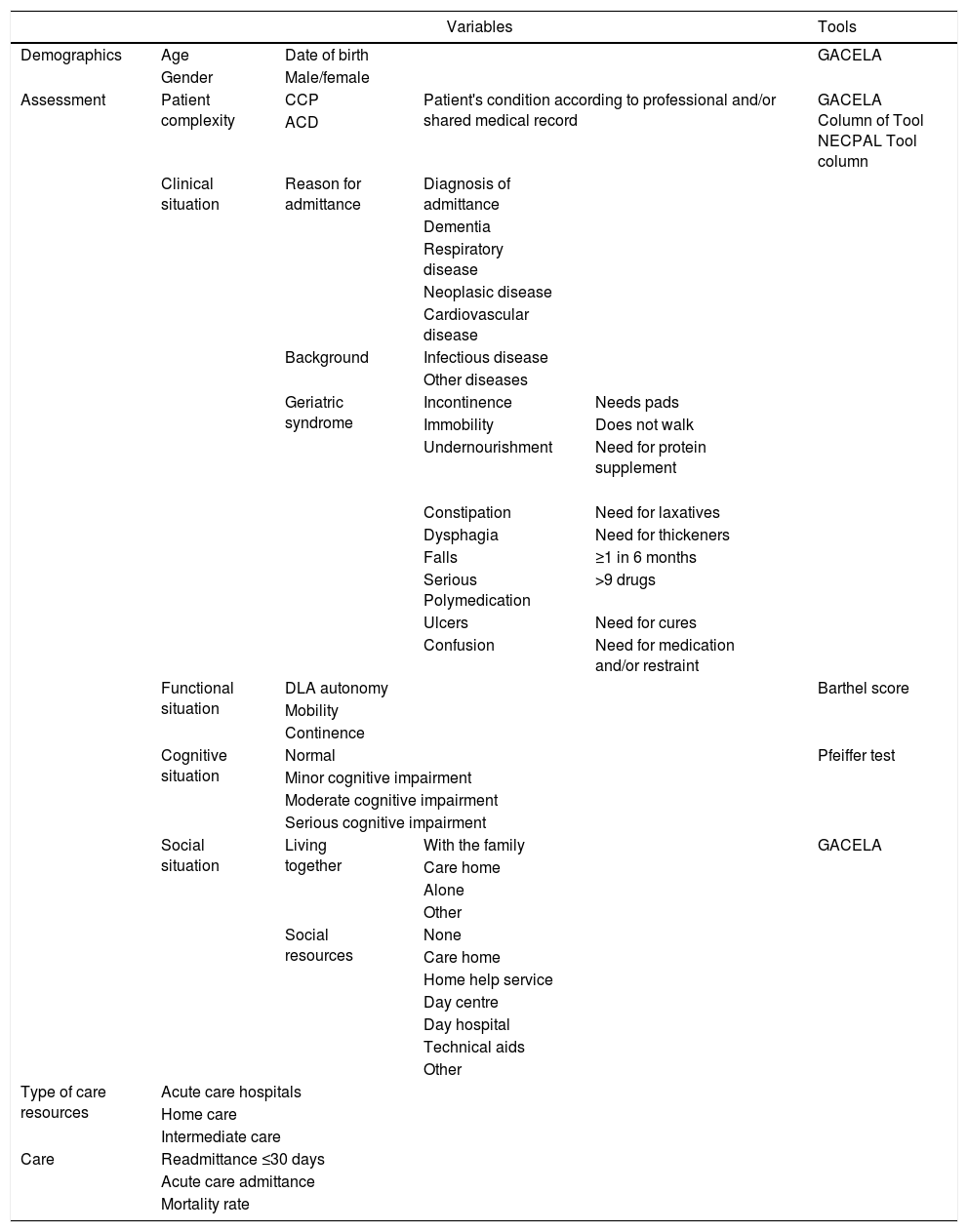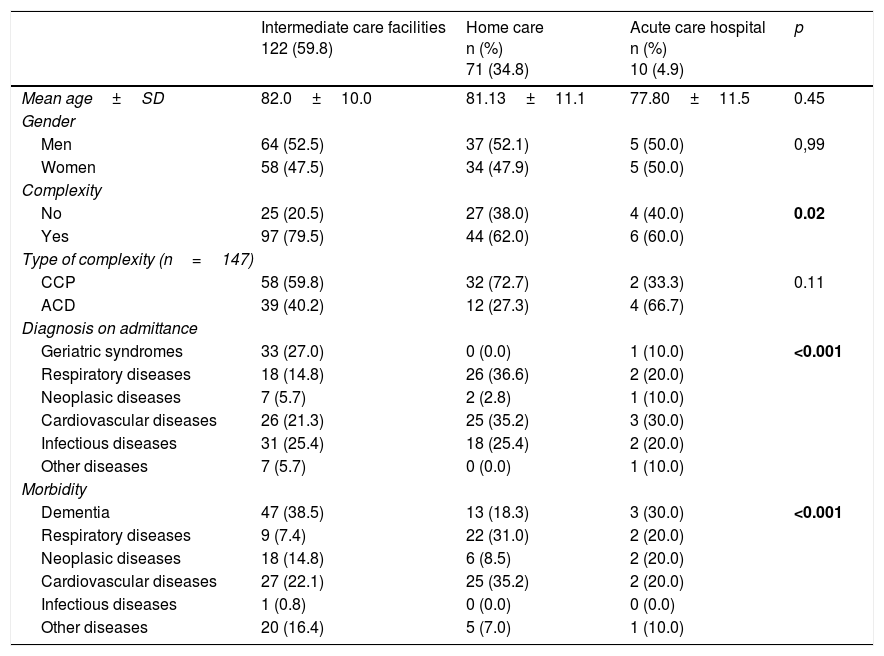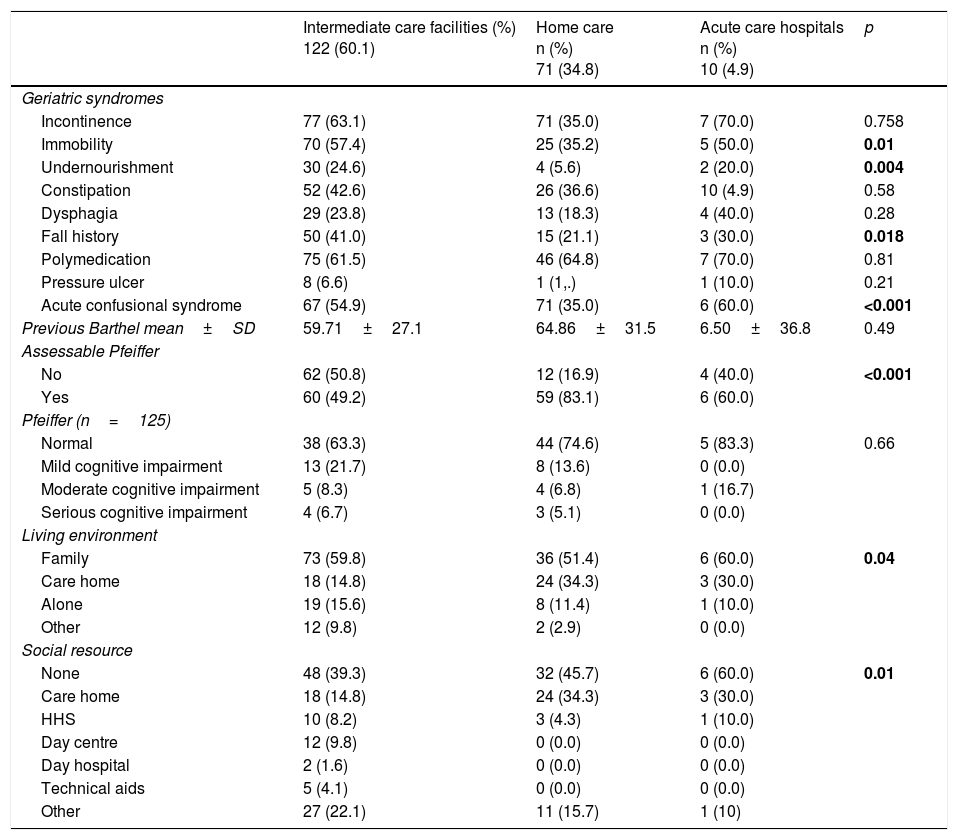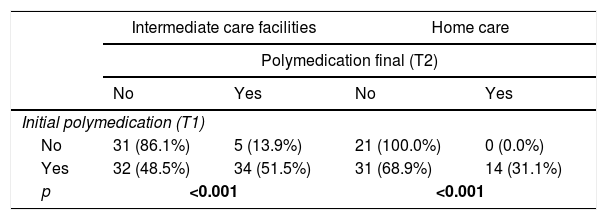To describe the profile of patients evaluated by Nurse Care Management in an Emergency Department and identify the type of alternative healthcare resource assigned and report the results of clinical practice.
Material and methodsProspective follow-up, on admission to the Emergency Department in an acute hospital and on discharge from the alternative healthcare resource, of patients assessed by Nurse Care Management, from July to December 2015. The patient characteristics, social environment and results of clinical practice were studied.
Results190 patients were included of whom 13 were readmitted (6.8%). 122 (59.8%) cases from the Emergency Department were referred to intermediate care facilities, 71 (34.8%) cases for domiciliary care, 10 (4.9%) cases were referred to an acute care hospital and 1 (0.5%) died. Patients referred to intermediate care were more complex, presented geriatric syndromes as their reason for admission and diagnosed with dementia, while those referred to home care presented more respiratory and cardiovascular illnesses (p<0.05). The mean Barthel Index and polypharmacy before emergency admission were higher than at the time of discharge from the alternative healthcare resource (p<0.05).
ConclusionsPatients presenting with advanced age, complexity, comorbidity, are referred to intermediate care facilities or domiciliary care, they are admitted to acute care hospitals and are readmitted less than other patients. After being discharged from the alternative resource, they lose functional capacity and present less polypharmacy.
Describir el perfil de pacientes valorados por la Gestora de Continuidad de Cuidados, en un servicio de urgencias e identificar el tipo de recurso asistencial alternativo asignado y los resultados de la práctica clínica.
Material y métodosEstudio prospectivo de seguimiento al ingreso, en el servicio de urgencias de un hospital de agudos y al alta del recurso asistencial alternativo, de los pacientes valorados por la Gestora de Continuidad de Cuidados, de julio a diciembre de 2015. Se estudiaron las características de los pacientes, entorno social y resultados de la práctica clínica.
ResultadosSe incluyeron 190 pacientes, de los cuales reingresaron 13 (6,8%). Desde urgencias, 122 (59,8%) asistencias se derivaron a centros de atención intermedia, 71(34,8%) a hospitalización domiciliaria, 10 (4,9%) al hospital de agudos y un paciente (0,5%) falleció. Los pacientes derivados a atención intermedia eran más complejos, presentaban síndromes geriátricos como motivo de ingreso y diagnóstico de demencia. Los derivados a hospitalización domiciliaria presentaban más enfermedades respiratorias y cardiovasculares (p<0,05). Los valores medios del índice de Barthel y la polifarmacia, antes del ingreso en urgencias fueron más altos que en el momento del alta del recurso alternativo (p<0,05).
ConclusionesLos pacientes presentan edad avanzada, complejidad, comorbilidad asociada, se derivan a atención intermedia o a hospitalización domiciliaria, no ingresan en el hospital de agudos y reingresan menos que el resto de los pacientes. Al alta al recurso alternativo, los pacientes pierden capacidad funcional y tienen menos polifarmacia.












